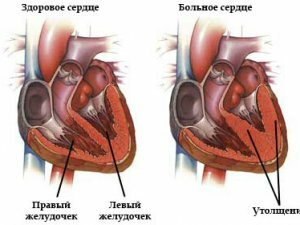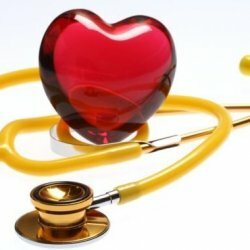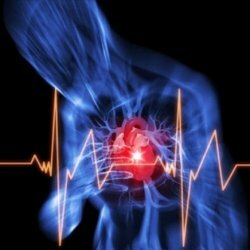Symptoms of low blood pressure in men and treatment
Normally, a healthy male 20-40 years of age, blood pressure is 120/80 mm Hg. Art. The upper indicator indicates the pressure with which the heart pushes blood into the aorta, and the lower one indicates the blood pressure during the return to the heart. With age, the pressure changes.
But to draw conclusions about the presence of hypotension should not be based on universal indicators, but on individual characteristics of the body. In some cases, hypotension is a physiological condition. It does not cause a deterioration in well-being and is observed in athletes, residents of high mountains, subtropics and tropics or tall and lean people.
With low blood pressure, a person feels a number of unpleasant symptoms that arise from him from time to time. Such a state can be caused by a variety of causes and factors: diseases of any organs or systems, the environment, the intake of certain medications, or the emotional state( for more details, "Causes of Low Pressure").
Contents
- 1 Low-Pressure Symptoms
- 1.1 Acute hypotension
- 1.2 Chronic hypotension
- 2 What should I do?
- 2.1 Acute hypotension emergency treatment
- 2.2 Treatment of chronic hypotension
- 2.2.1 Lifestyle correction
- 2.2.2 Medical treatment
- 2.2.3 Additional physiotherapy procedures
Low-pressure symptoms
Hypotension can be:
- acute - decreasePressure occurs sharply at the peak of the disease;
- chronic - low blood pressure is observed for a long time and is caused by some kind of disease.
Acute hypotension
Acute hypotension is life-threatening and requires emergency care. It can accompany a heart attack, severe arrhythmias, intracardiac blockades, pulmonary embolism, bleeding, allergic reactions, or other life-threatening conditions.
Symptoms of acute hypotension are as follows:
- skin becomes pale, moist and cold;
- appears growing weakness;
- dizziness can cause gait unsteadiness and fall;
- in the patient darkens in the eyes;
- feels thirst and dry mouth;
- pulse is getting fast;
- appears shortness of breath;The
- person feels anxious or afraid.
As the pressure decreases further, the onset of syncope may occur. And in severe cases, the pulse is not detected, and blood pressure values become extremely low.
Chronic hypotension
The main symptoms of chronic hypotension are caused by impaired cerebral circulation. Signs of low blood pressure appear frequently, regularly, and worsen overall well-being.
Symptoms of chronic hypotension are as follows:
- headaches in the region of the temples, occiput or forehead( may be supplemented with nausea or vomiting);
- frequent cases of migraine-like pain( in one half of the head);
- darkening in eyes;
- dizziness( sometimes up to fainting);
- noise in the head;
- rapid fatigue and weakness;
- reduced performance;
- diffuse;
- memory reduction;
- emotional instability: irritability, mood swings;
- susceptibility to depression;
- sensation of lack of air and frequent yawning;
- numbness and coldness of hands and feet;
- hypersensitivity to heat and cold;
- abnormalities in the heart: uncomfortable and painful sensation behind the sternum, palpitations and shortness of breath for physical or emotional stress, etc.
Some people with low blood pressure feel a significant deterioration in their health when weather changes or during magnetic storms.
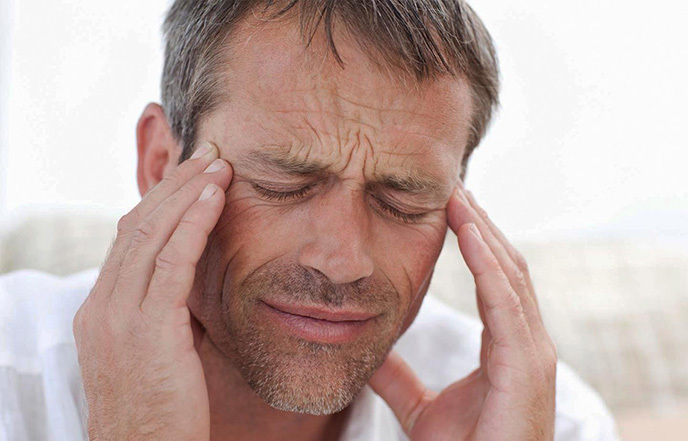
Fig.1 - Headache in the temporal region is a common symptom of low blood pressure.
In addition to the above low-pressure symptoms, the patient has characteristic signs of the underlying disease:
- with iron deficiency anemia - changes in taste( need to eat chalk, clay, spicy and salty foods), appetite disorders, pallor, tachycardia, dyspnea;
- for hypothyroidism - speech retardation, hair loss, lower body temperature, swelling, obesity;
- with mitral stenosis - noises in the heart, a kind of blush with a bluish tinge, a heart hump, pain in the heart, shortness of breath, fainting;
- in case of peptic ulcer - pain in the stomach, lability of the nervous system, digestive disorders, etc.
With orthostatic collapse, the decrease in blood pressure is observed only when trying to sharply transfer the body from the horizontal to the vertical position. Especially often such episodes are observed in the morning. They are accompanied by a sharp darkening in the eyes, dizziness, noise in the head and in severe cases can lead to fainting. Such people are advised to never get up off the bed and avoid sudden changes in body position.
What should I do?
Treatment of hypotension should always be comprehensive. His tactics are determined by the type of hypotension.
Emergency care for acute hypotension
If the pressure drops sharply, the following measures should be taken:
- Place the victim on a horizontal surface and lift his legs. Head turn side to prevent aspiration of vomit.
- Call an ambulance or doctor. If a person is conscious, you should know his name, surname and age. To assess its adequacy, ask about the color of clothing, etc. It is compulsory to explain to the victim what happened to him and where he is.
- Relieve the patient's body from restraining clothes and ensure the flow of fresh air.
- With fainting, give a sniff of cotton wool with ammonia.
- Rub the ears of the patient.
- Find out from the patient what diseases he suffers and whether he has diabetes.
- If the patient does not have diabetes, give him a hot, strong and very sweet tea. Drink it in small sips.
- Do not offer cold water, alcohol, coffee or medication to the patient.
- Do not water or spray the patient with cold water, as this can lead to spasmodic vasodilation and the pressure will drop even more.
- After the patient has recovered, he should not be allowed to stand up immediately. A person can shake and paresthesia in the limbs may appear. To eliminate them, the patient should be covered with a warm blanket, rub his hands or lower his limbs in hot water.
After the arrival of a doctor or ambulance team, measures are taken to stabilize blood pressure, and the cause of its decrease is established. Further treatment is aimed at eliminating the disease or condition that led to the development of acute hypotension.
Treatment of chronic hypotension
Before taking any measures to increase blood pressure, it is necessary to identify the cause of its decrease. To begin, the patient should consult a doctor, therapist, who, after careful examination, could prescribe treatment or referral to another specialist( cardiologist, endocrinologist, neuropathologist et al.).
Therapy, aimed at eliminating the underlying disease, will help to minimize episodes of hypotension and reduce the risk of possible complications. For example, in diseases of the heart or blood vessels to a patient will be assigned a long and complex treatment of the underlying pathology, and in endocrine disorders pressure can usually be quickly normalize using hormone replacement therapy.
Lifestyle correction
Treatment of any chronic hypotension should begin with a lifestyle correction. In some cases, namely, with neurocirculatory dystonia, these measures are sufficient to eliminate unpleasant symptoms.
To a low-pressure patient, the following rules should be observed:
- Sleep - Sleep should last at least 8-9 hours.
- Do not get up drastically after sleeping. After awakening, it is recommended to have an easy gymnastics in bed - bending and limb movements, head turns, easy neck massage. After this, you should sit in bed and stay in this position for 1-2 minutes.
- Perform morning exercises( 7-10 minutes).
- Properly eat and drink plenty of water. Food should be vitaminized, and its reception should be performed at least 3 times a day( breakfast is mandatory!).In the morning, in the absence of contraindications, drink a cup of sweet coffee.
- To lead an active way of life, often to walk outdoors and to go in for sports( intensity of loading necessarily to discuss with the doctor).
- Refuse bad habits.
- Take a contrast shower. The temperature drop should be gradually increased. At the end of the shower should be cold.
Read on: Products that are useful for the cardiovascular system
When neuro dystonia mild or moderate period of the non-drug treatment may be up to 12 months. And only when these measures are ineffective the doctor can decide whether to take drugs to increase the pressure.
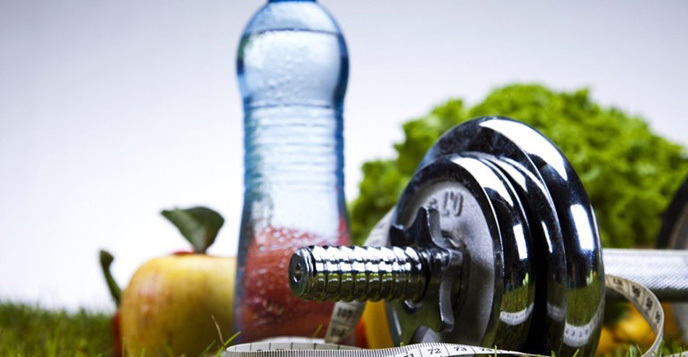
Fig.2 - Healthy lifestyle is an integral part of low pressure treatment and prevention.
Pharmacotherapy
At low pressure, after eliminating all possible contraindications, the doctor may recommend acceptance of the following drugs:
- preparations with caffeine( . Tsitramon, askofen, Piramein etc.) - take the appearance of headache caused by violation of the venous outflow of blood from the brainVessels;
- Cordiamine or Benzoatp - taken with dizziness and pressure drop caused by changes in atmospheric pressure or magnetic storms;
- Regulton - taken with a decrease in pressure, accompanied by anxiety or fear, with insomnia, mental fatigue and dizziness;
- Ortho-taurine - taken with vegetovascular dystonia and increased stress;Nootropic drugs
- series( or Nootropil Piracetam, Cinnarizine, Encephabol) - accept at dizziness, headaches, tinnitus, and other disorders caused by cerebral circulation disorders;
- Cerebrolysin - is used in vegetative dystonia for hypotonic type and other neurological pathologies;
- Glycine - taken for the normalization of metabolic processes in the brain tissues;
- Tanakan - taken with dizziness, ringing in the ears, sleep disorders, memory, attention and other disorders of cerebral circulation;
- Citrulline - adopted for the normalization of metabolism and the activation of protective functions in asthenia and after fatigue, serious illness, injury, surgical interventions etc.
Drug treatment of chronic hypotension may be supplemented by vitamin preparations:
- Unicap;.
- Enerion;
- Glutamavit;
- Centrum;
- Compliwit;
- Quadevite;
- Aerovit.
Such drugs are taken by courses and their choice should be performed by a doctor who can take into account all the individual characteristics of the body, indications and contraindications.
Additional physiotherapeutic procedures
Drug therapy can be supplemented by the following physiotherapeutic procedures:
- massage;
- exercise therapy;
- acupuncture;
- aromatherapy;
- balneotherapy.
Cardiologist Petrova Yu.
Recommended for viewing:

